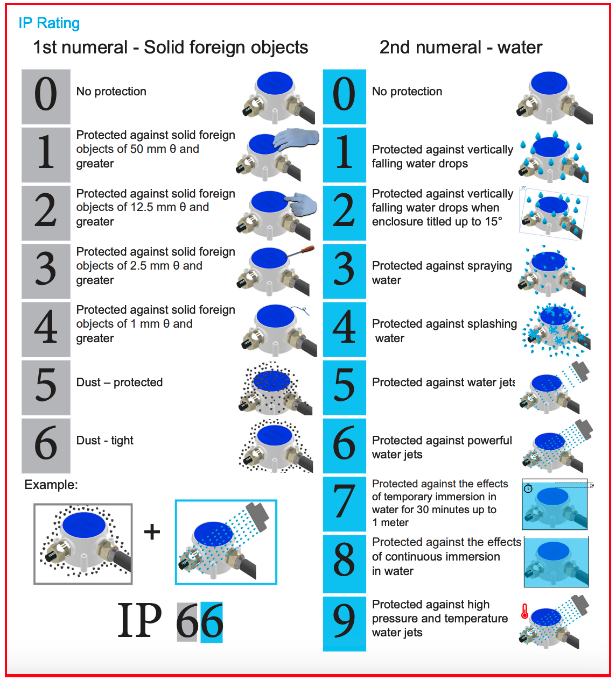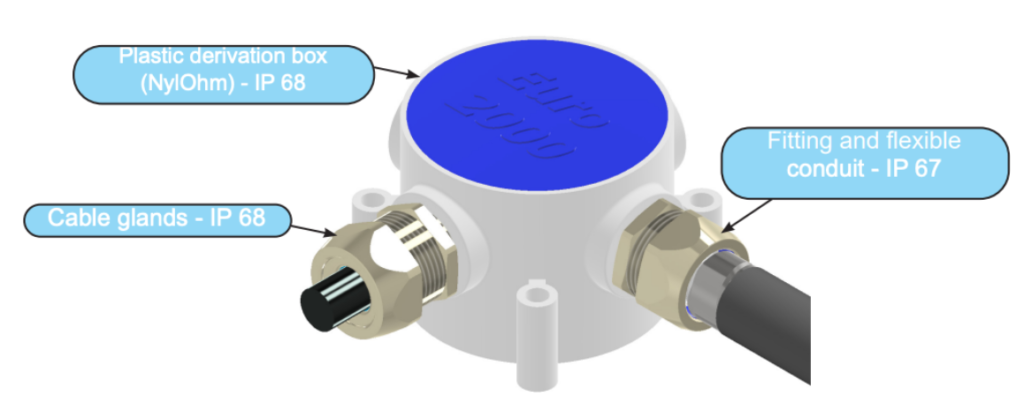What is the IP rating and what does it mean?
8 Feb , 2023
Ingress Protection (IP) rating is a parameter used to assess the degree of protection and tightness of an electrical product or system (such as an enclosure or junction box, cable gland, or conduit fitting) against access by foreign particles and/or water.
The protection is checked through standardized test methods, and the European standards of reference are IEC 60529, EN 60529, ISO 20653, and UL Standards.
The IP rating consists of two digits and – less commonly – two letters.
The first digit represents the degree of protection against solid foreign bodies and ranges from a minimum of 0 to a maximum of 6:
- 0: no protection
- 1: protection against solid foreign bodies with a diameter greater than 50 millimeters
- 2: protection against solid foreign bodies with a diameter greater than 12.5 millimeters
- 3: protection against solid foreign bodies with a diameter greater than 2.5 millimeters
- 4: protection against solid foreign bodies with a diameter greater than 1 millimeter
- 5: protection against dust with a guarantee of no harmful deposits
- 6: full sealing against dust
The second digit represents the degree of protection against water and ranges from a minimum value of 0 to a maximum of 9:
- 0: no protection
- 1: protection against the vertical fall of water drops
- 2: protection against the vertical fall of water drops and rain up to 15° from the vertical axis
- 3: protection against water splashes up to 60° from the vertical axis
- 4: protection against water splashes from any direction
- 5: protection against water jets
- 6: protection against powerful water jets
- 7: protection against the effects of temporary immersion in water (for 30 minutes, to a depth up to one meter)
- 8: protection against continuous immersion
- 9: Protection against high-pressure and high-temperature water jets

How can one understand the IP rating of an electrical system consisting of several elements?
For mixed protection systems, the IP classification applies by taking into consideration the various IP ratings of each element comprising the system and then using the element with the lowest rating as the reference. Here’s a practical example to clarify this concept:
This system consists of a Nylhom junction box assembled with cable gland – IP68, with cable gland fitting – IP67, and plastic junction box (NylOhm) – IP68.

Therefore, the system has an IP 67 rating, as does the fitting and flexible pipe, which is the element with the lowest IP rating compared to the other two elements that make up the system.
Here you can download a summary of the various IP ratings and information on the classification of some of our products. If you need more information, please do not hesitate to contact us. Our experts are ready to provide you with more details and insights!

